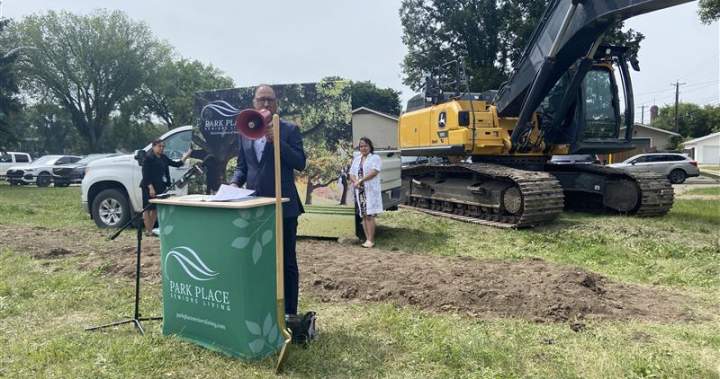In the heart of Edmonton’s northeast, a quiet revolution in senior housing is taking root. The Beverly Heights neighborhood – long familiar to locals for its mature trees and post-war homes – will soon welcome a 175-unit seniors’ residence aimed at addressing the growing needs of Edmonton’s aging population.
“This community has been waiting for appropriate housing options for years,” explains Mary Sanderson, Executive Director of the Edmonton Seniors Housing Coalition. “Many residents have lived in Beverly Heights for decades and desperately want to age in place, close to their families and the community they helped build.”
The $42.3 million project, announced last week by Alberta’s Ministry of Seniors, Community and Social Services, represents the largest seniors’ housing investment in Edmonton since 2019. The facility will offer a mix of independent living apartments and supportive living spaces designed to accommodate seniors as their care needs evolve.
What makes the Beverly Heights project stand out isn’t just its scale, but its community-focused approach. Unlike institutional models of the past, the residence incorporates elements requested directly by community members during extensive public consultations held throughout 2023.
“We heard consistently that seniors want natural light, private outdoor spaces, and community gardens,” notes Ward Métis Councillor Ashley Salvador, who championed the project. “But they also want intergenerational connections – spaces where grandchildren can visit comfortably and community programs can flourish.”
The provincial investment comes as Edmonton faces what some experts call a “silver tsunami.” According to Statistics Canada projections, Edmonton’s senior population will nearly double by 2041, with those over 85 representing the fastest-growing demographic segment.
City planning documents reveal Beverly Heights has a higher-than-average concentration of seniors living in aging housing stock, often in homes that no longer meet their mobility needs. Many face the difficult choice between staying in unsuitable housing or leaving the neighborhood they’ve called home for generations.
Jean Lemieux, 78, has lived in Beverly Heights since 1972. From her kitchen window, she can see the future construction site, located at 118 Avenue and 43 Street.
“My husband passed three years ago, and this two-story house is getting to be too much,” Lemieux shares, stirring her tea. “But my daughter lives six blocks away, my doctor is just down the road, and my church community is here. Where would I go?”
For seniors like Lemieux, the new facility offers hope. Construction is slated to begin this summer, with completion targeted for late 2026. The project will feature accessible design throughout, including 32 units specifically adapted for residents with mobility challenges.
The development also reflects evolving approaches to senior housing. Gone are the sterile, hospital-like environments of previous generations. Instead, the architectural renderings show light-filled common areas, multiple green spaces, and a street-level café open to the public – design elements that research suggests contribute significantly to mental health and longevity.
“What we’re really building is a community hub with housing attached,” explains lead architect Miriam Cheng of Manasc Isaac Architects. “The days of warehousing seniors away from the public are over. This facility will be integrated into the neighborhood fabric.”
The provincial funding announcement follows years of advocacy from senior organizations and comes amid growing concerns about housing affordability across all demographics. According to the Edmonton Social Planning Council, nearly 22% of Edmonton seniors live on fixed incomes below the poverty line, with housing costs consuming an unsustainable portion of their monthly budgets.
Provincial Housing Minister Jason Nixon acknowledged these concerns at the funding announcement, noting that 30% of the units will be reserved for low-income seniors, with subsidized rents based on a sliding scale.
“Every Albertan deserves dignity and security in their later years,” Nixon stated. “This project demonstrates our government’s commitment to meeting the housing needs of our seniors, particularly those with limited financial resources.”
Not everyone is celebrating, however. Some community advocates question whether 175 units will make a meaningful dent in the estimated 3,200-unit shortage of affordable senior housing across Edmonton. Others have expressed concerns about traffic impacts in the largely residential neighborhood.
The Beverly Heights Community League has generally supported the development, though it continues to advocate for improved transit connections to the site and better pedestrian infrastructure throughout the area.
“We welcome this investment in our community,” says League President Darren Thompson. “But we also want to ensure the neighborhood infrastructure can support this new density. Many of our sidewalks are cracked and uneven – hardly safe for seniors with mobility issues.”
City officials indicate the development will trigger a review of surrounding infrastructure, potentially fast-tracking already-planned improvements to nearby crosswalks, sidewalks, and bus stops.
As Edmonton continues to grow and evolve, the Beverly Heights project represents a test case for how the city will house its aging population. If successful, similar models could be replicated in other mature neighborhoods facing demographic shifts.
For seniors like Jean Lemieux, watching the project take shape will be bittersweet – a reminder of time’s passage, but also a symbol of community resilience.
“Beverly has always taken care of its own,” she reflects. “I’m glad to see that tradition continuing, even as everything else changes around us.”






